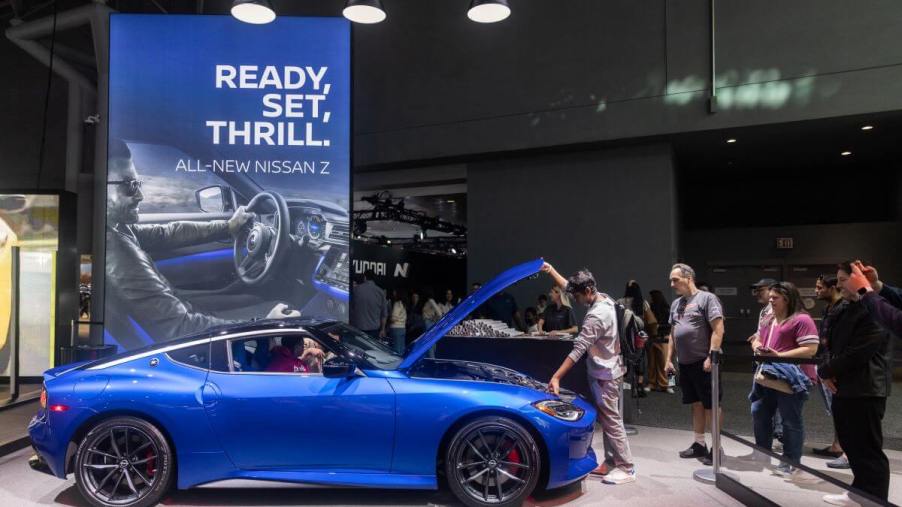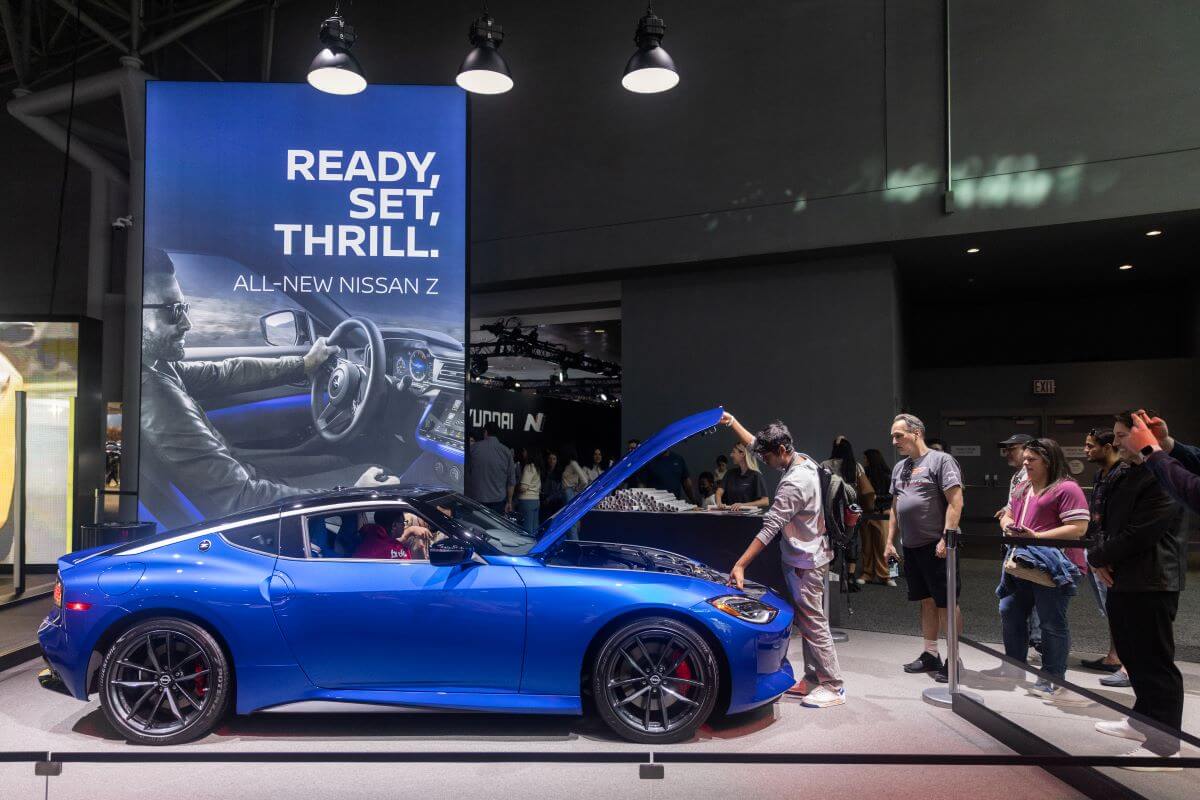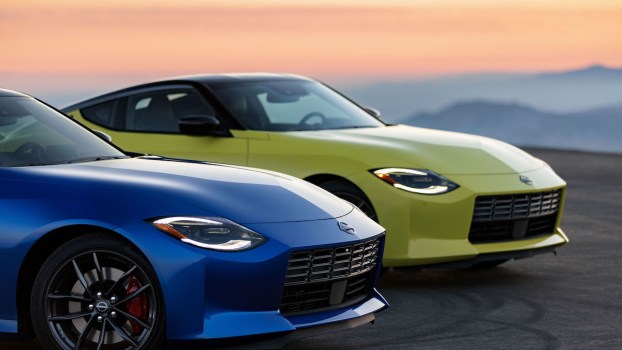
What Does the Letter Z Stand for in the Nissan Z?
Nissan, synonymous with practical cars that are reliable and affordable, is also known for its iconic sports car lineup. The sleek 2023 Nissan Z is the latest model in its long history of making Z-cars. So, what does the letter Z stand for? Z-car enthusiasts often debate this, and there are lots of speculations and rumors.
History of the iconic Nissan Z lineup
Nissan USA’s former president Yutaka Katayama, known as “Mr. K” and “the father of the Z,” had the vision to create a car that would be fun to drive, affordable, and appealing to Americans, reports TopSpeed. The Fairlady Z began production in 1969 and was sold in Japan before being renamed the Datsun 240Z for the U.S. market. (Nissan has since dropped the Datsun name.)
The first-ever Z-car was an instant hit. It featured a long nose, fastback rear hatch, and an affordable price tag, according to Car and Driver. The 240Z sold more than 160,000 units in its four years of production in the U.S., MotorTrend reports. It was replaced with the 260Z in 1974, followed by the 280Z in 1975. Each new car series added new features and design modifications.
Advertised as “the legendary Z Car reborn,” the second generation Z-car featured significant design and performance changes, and wasn’t as successful as past models. The 280ZX was launched in 1978 as a 1979 model, followed by the 280ZX Turbo in 1981.
The third-generation Z-car debuted in 1984 as the 300ZX (Z31). Its body featured fewer curves and more squared lines. The 1990 300ZX (Z32) was the fourth-generation Z-car, and additional styling changes included a wider width and longer wheelbase.
Nissan paused production on Z-cars for the U.S. from 1997 through 2002 until returning with the all-new 350Z in 2003. Receiving rave reviews, the fifth-generation Nissan Z closely resembled the original. This car was renowned for returning the 240Z’s best design details and performance features.
After several editions of the 350Z, the sixth-generation Nissan Z-car arrived in 2009. There were two options—the 370 Roadster, a convertible known for the ease of its convertible top operation, and the 370Z, the last of which disappeared from lots in 2021 as the model was selling out across the country.
Nissan dropped all the numbers in its name for the 2023 version, which is simply “the Z.”
The debate over the Z car name and what it means

Since the letter Z has been in every model name for over 50 years, many wonder what it stands for and if it has a meaning. A slew of car enthusiasts adore the Z-car fiercely and continually debate the importance of the letter Z.
A visit to an online Z-car forum reveals some of the theories Nissan Z fans have about the name. Speculations include the translation of the letter Z in Japanese; others believe it may stand for “Zoom,” and many say that it was chosen to represent ‘the last word in sports cars” since it’s the last letter of the alphabet. However, there is no evidence that any of these theories are correct.
The facts all point to a less exciting truth. During the development of the first Z car, Teiichi Hara, Nissan’s head of design, called the project “Type Z” because most of the other letters of the Roman/Latin alphabet had already been used for other projects, Garage Dreams reports.
An interview with Katayama published in the Los Angeles Times confirms that the Z comes from Nissan’s project name but adds another little-known fact—that it was chosen because it stands for “zenith.”
A look at the 2023 Nissan Z
Nissan‘s last-gen 370Z was in production for 11 years, replaced with the highly anticipated 2023 Nissan Z. Its specs were revealed last year and include a 3.0-liter twin-turbo V6 engine. An updated style was announced in January 2023, featuring a split-nose grille. Dealers may offer it as a pre-installed option later this year in the U.S., reports say, but this hasn’t been confirmed yet.



